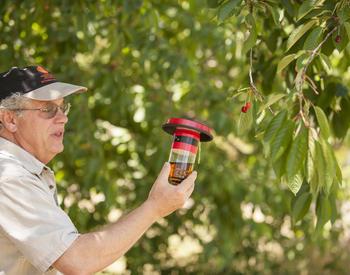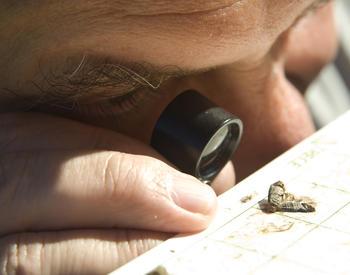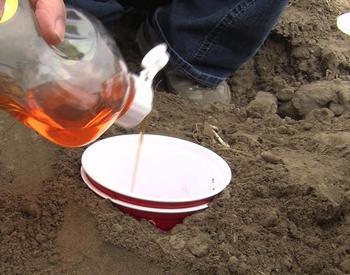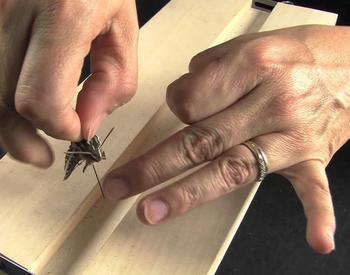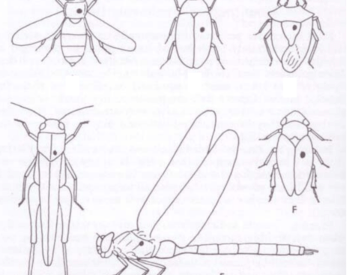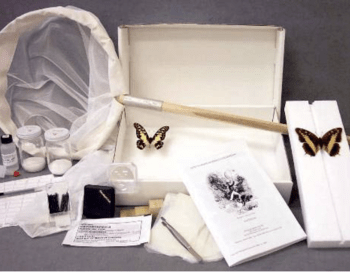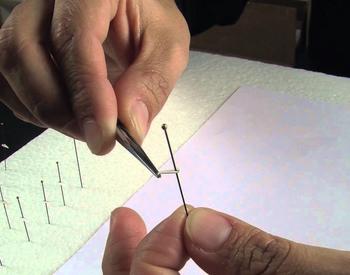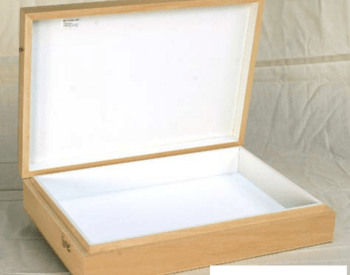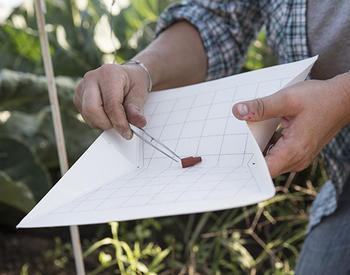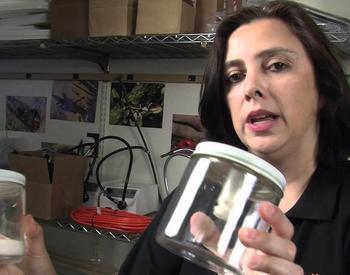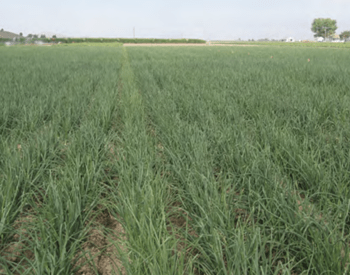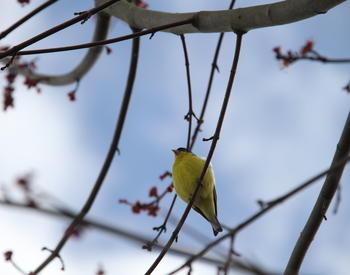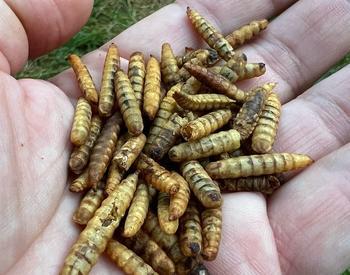You may have encountered white, segmented “worms” or grubs when chopping firewood and wondered what they were. Common questions include, did they kill my tree? And are they a danger to other trees? The quick answers are no, and no.
The “worms” are the larvae of wood-boring beetles. With few exceptions, they infest trees that are already dead or dying from other causes and are not threats to healthy trees. Two major families of wood-boring beetles in conifers are:
- Flatheaded borers
- Roundheaded or longhorned borers
Flatheaded borer adults tend to be torpedo-shaped with bright metallic coloring, such as the golden buprestid (pictured). Roundheaded borers typically have antennae that are longer than their bodies (hence their other name, longhorned borer).
Adult longhorned borers may be up to 2 inches in length; flatheaded borers are generally smaller. Some wood borer larvae can reach large sizes. The larvae of the ponderous borer, for example, reaches nearly 3 inches in length. It’s chomping action and large mandibles are said to have inspired the design of the modern chainsaw.
Looking at the wood and bark
If you look at a tree that has recently died and pull off a piece of bark, you will often see a winding gallery pattern on the inside of the bark and on the surface of the wood. These galleries are created by wood-boring beetles or bark beetles.
Borer galleries are mostly unbranched while bark beetle galleries are branched, with the main galleries wider than the branches.
Flatheaded borer galleries are packed with fine, rounded material whereas roundheaded borer galleries contain more loosely packed, coarser-textured material.
Often, wood borers will invade a tree that has been killed by bark beetles, and the wood borer galleries will obscure or “overwrite” the bark beetle galleries. Note that wood borers generally invade the wood itself while bark beetles do not.
Wood borer larvae are food for hungry woodpeckers. They also help degrade and recycle wood back into soil by turning it from solid wood into sawdust.
Assessing the threat
From a wood products standpoint, borers can cause a lot of damage by tunneling into solid wood. Borer larvae can live for many years, and the adults sometimes emerge from framing lumber or other material inside houses, much to the alarm of the people living there. But these beetles are not a threat to standing trees or seasoned lumber.
Some flatheaded borers have the ability to detect smoke from long distances. Where there’s smoke, there’s fire, and where there's fire, there are dead trees, which is dinner for the beetles. According to a decades-old story, certain species of flatheaded borer would swarm attendees at football games in Memorial Stadium in Berkeley, occasionally landing on people and biting exposed skin. The insects apparently were attracted to the haze of smoke hanging over the stadium from the thousands of cigarettes smoked on game day.
Wood-boring beetles are large and often spectacular in appearance but, as noted above, generally aren't threats to healthy trees. This is in contrast to the mostly small and inconspicuous bark beetles. The one exception to this rule is the flatheaded fir borer, which is the insect responsible for much of the Douglas-fir mortality in southwest Oregon. The flatheaded fir borer aggressively attacks Douglas-firs on harsh, low-elevation sites, especially in drought years.
To reduce the chances that beetles will invade your firewood, harvest and process green material (such as standing madrone) during the fall and winter, when the beetles are not in flight.
Don’t move firewood. Since unseen wood borer larvae can “hitch a ride” in pieces of firewood only to emerge later as adults, there is major concern about transporting firewood across state lines or even long distances within states. Damaging pests such as the emerald ash borer and the Asian longhorned beetle have been spread throughout the eastern US via firewood. Thankfully, they have not been found in Oregon, but the potential is certainly there. Here’s another reason to “buy local”.
